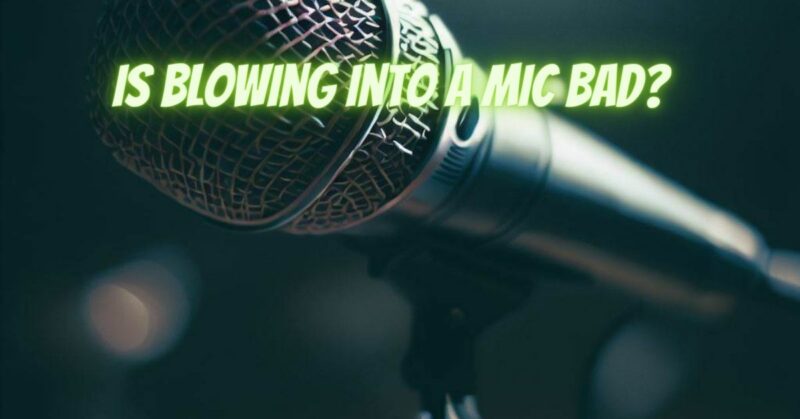Blowing into a microphone, often done playfully or as a sound effect, may seem harmless or even amusing. However, it is important to understand that blowing into a microphone can pose risks to both the microphone itself and the audio equipment it is connected to. In this article, we explore the potential dangers and negative effects of blowing into a microphone.
- Damage to the Microphone Diaphragm:
The diaphragm is a delicate component of a microphone that converts sound waves into electrical signals. Blowing into a microphone with force or from a close distance can cause the diaphragm to move abruptly and beyond its intended range. This sudden movement can lead to damage, such as diaphragm deformation or tearing. Once damaged, the microphone’s ability to accurately capture sound will be compromised, resulting in distorted or poor-quality audio.
- Overloading the Microphone Capsule:
Blowing into a microphone can generate an excessive amount of sound pressure, causing the audio signal to peak and distort. This distortion, known as clipping, occurs when the microphone capsule is unable to handle the high sound levels produced by the forceful blowing. Clipping not only affects the immediate sound being captured but can also cause damage to the microphone’s internal circuitry, potentially rendering it inoperable.
- Risk of Moisture Damage:
When blowing into a microphone, saliva particles or moisture from the breath can enter the microphone’s interior. Over time, this moisture can accumulate and lead to corrosion or damage to the microphone’s electronic components. Corrosion can cause issues such as decreased sensitivity, intermittent connectivity, or even complete failure of the microphone. It is important to keep the microphone free from moisture to maintain its functionality and longevity.
- Impact on Audio Equipment:
Blowing into a microphone can also affect the audio equipment connected to it, such as amplifiers or speakers. The sudden increase in sound levels can overload the input of the connected devices, potentially causing damage to their internal components. Additionally, the distorted or clipped audio signal produced by blowing into the microphone can lead to poor sound quality, negatively impacting the listening experience for the audience or recording.
- Professional Etiquette:
In professional settings, such as live performances, broadcasts, or recording studios, blowing into a microphone is generally considered unprofessional and disruptive. It can distract the audience, compromise the integrity of the audio production, and create unnecessary challenges for sound engineers in achieving optimal sound quality. It is important to use microphones appropriately and follow industry etiquette guidelines to maintain professionalism and ensure the best possible audio results.
Conclusion:
Blowing into a microphone may seem harmless or entertaining, but it carries potential risks for both the microphone and the audio equipment connected to it. Damage to the delicate diaphragm, overloading the microphone capsule, moisture accumulation, potential damage to audio equipment, and unprofessional behavior are all factors to consider. It is advisable to treat microphones with care, use them for their intended purpose, and avoid any actions that could compromise their performance or longevity. By doing so, you can maintain the integrity of the microphone and ensure high-quality audio reproduction.

